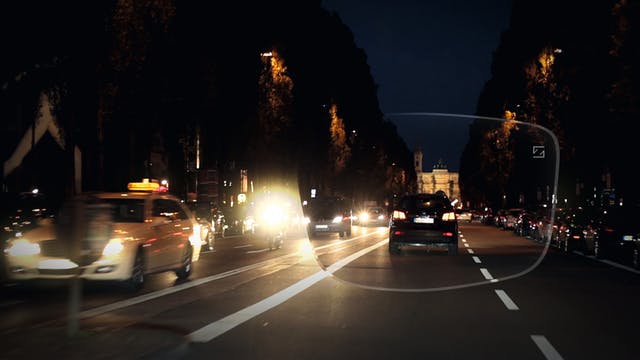Prescription Night Driving Lenses

Many people feel insecure, uncomfortable and stressed when driving, especially in difficult light and weather conditions such as rain and mist, or at dusk or night. On average 83% of spectacle lens wearers* also drive. Driving can be a real challenge for everybody – no matter how long the distance, and good vision is vital for safety.
With Night-Drive Lenses, we are introducing a new lens product category for everyday use. It is specifically designed to meet the vision needs of people who want to feel safer and more comfortable when driving with their everyday lenses.
Night Driving Glasses
Our eyes acclimatize to the comparatively low light available after sunset in the absence of direct UV light from the sun. When artificial light sources, such as approaching headlights, overhead street lights, and stoplights, strike our eyes, the effect is similar to daytime glare. Objects that emit this light are “haloed,” which means that our eyes detect a ring of blurred light, or a halo, around them. Considering that humans can’t see past these sources of artificial light in the dead of night, you can appreciate how dangerous nighttime driving may be. If you’re having problems seeing at night despite having up-to-date prescription night driving lenses, you should read this explanation of the features you should look for in your glasses.
Features Of Prescription
You should start there if you haven’t had an eye exam in the last year or two. First, an optometrist to look for changes in your prescription and potential eye problems. For example, seeing “halos” around lights at night could be a symptom of cataracts. Tell your doctor about specific issues. Otherwise, your glasses may just lack the necessary functionality. We recommend transparent lenses with an AR coating for the finest nighttime driving vision.
1. Clear Lenses
The Visible Light Transmission (VLT) of clear lenses is 100%. This means that the most light passes through the lens, allowing you to see better at night. You might consider yellow lenses, but their benefits are debatable. While they minimize glare, they also make it more challenging to see in the dark. This is because a light tint is still a tint, and yellow lenses have a VLT of approximately 85-75 percent. They are helpful on hazy or foggy days, but it is better to have a transparent lens at night.
2. Anti-Reflective Coating
You must have an anti-reflective (AR) coating on your eyeglasses. This coating makes your prescription night driving lenses practically undetectable during the day and also blocks light glare at night. In addition, AR minimizes internal and surface reflections in lenses, resulting in fewer blinding headlights.
Wearing glasses while driving at night will not help your eyesight. Clear lenses and AR coatings are only suggested for people who wear prescribed glasses. Placing another lens in front of your eye increases glare. Pay us a visit at any branch if you’re having trouble seeing it at night.
